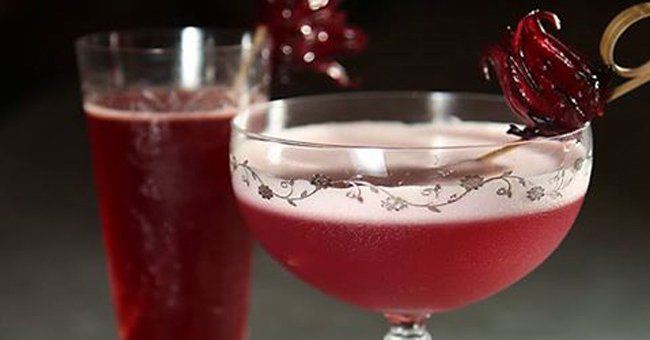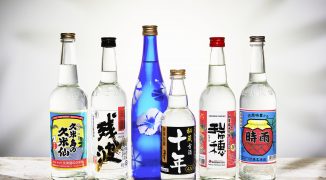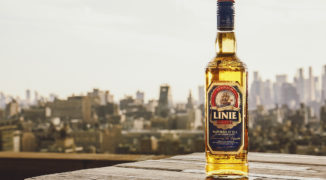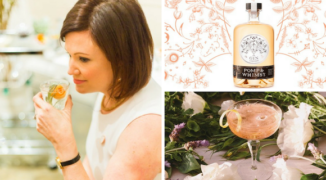Sometimes the best ideas in life are those formed while staring down into a champagne flute. Back in 1998, as Lee Etherington watched a hibiscus flower slowly unfurl its petals in his glass of bubbles at a dinner party, he got an idea. The flower wasn’t just an interesting garnish: it also imparted a flavor and fragrance that couldn’t really be replicated by any bottled goods on the market at the time. Thus, the seeds for Wild Hibiscus Flower Company were sown.
Etherington, who grew up traveling the Australian desert with his family and at one point led bush food tours through the Blue Mountains, was already well-practiced in capturing the flavors and essences of wild foods in preserves and jams. “He started making some jams and conserves from the bush fruits, out of his mother’s kitchen,” explains Jocelyn Etherington, co-owner of Wild Hibiscus (and wife of Lee). “Soon he realized that people wanted to pay for them, and he found his passion in that.” Once the Etheringtons had their eureka moment with the hibiscus flower, it wasn’t long before Sydney food-lovers began clamoring for the stuff.
Meanwhile, the very beginnings of the cocktail movement were taking hold. Though the Etheringtons had originally envisioned the product as merely a champagne garnish, bartenders had other ideas. “As soon as the mixologists came across it, there was a massive creative spin-off, and we saw you could use this with more than just champagne,” says Etherington. “I think what’s been interesting is seeing how versatile the flavor is with so many different kinds of liquor. It goes well with tequilas and mezcals, but it also goes well with rums and vodkas. We’ve even seen people integrate it with dark whiskeys, as people started to really understand the flavor profile. And of course it goes really well with gin as well, with the floral notes.”
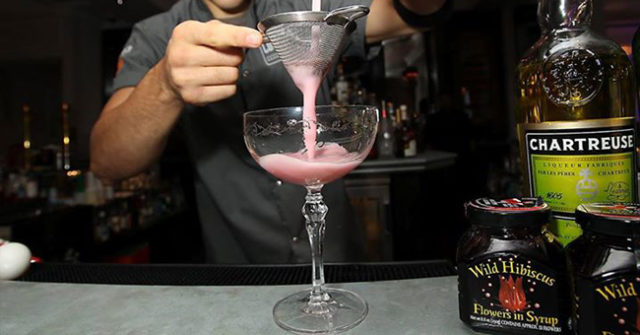 The hibiscus flower’s unique flavor actually pairs with a wide variety of spirits, from the most floral gins to dark rums and even whiskeys.
The hibiscus flower’s unique flavor actually pairs with a wide variety of spirits, from the most floral gins to dark rums and even whiskeys.
Then, of course, there’s the visual element. From tiny plastic swords to miniature umbrellas, garnishes have been an integral component in cocktails for decades —probably since the mid-19th century, when the first written reference to a lemon peel garnish appeared in Jerry Thomas’s “Bartender’s Guide.” And while citrus peels, cocktail cherries and olives still hold court in most bars, many modern bartenders are approaching the art of the garnish with the same attention to detail and craft that they use in building the rest of their drinks. (Banana dolphins notwithstanding.) “The whole cocktail art movement, as well — knowing how to present an interactive cocktail for guests — that’s where it really stands out, as an edible garnish that looks wild,” says Etherington.
Since that fateful dinner party, Wild Hibiscus’s offerings have expanded to include hibiscus extract, salts and teas, as well as an interesting product called b’Lure, a vivid blue extract of butterfly pea flower. The extract’s bright blue hue shifts into purple and pink as it’s mixed with acidic ingredients, making it infinitely interesting to experiment with as a visual component (especially given the recent resurgence of playful, colorful cocktails). Now, their goods have popped up on cocktail menus everywhere from Vegas casinos to Charleston, South Carolina. The team at Texas Truckyard in Dallas uses b’Lure in their 86 Mother Trucker (a kegged Long Island Iced Tea) and adds the hibiscus extract to their Kosma-politan. 492 King Street’s Megan Deschaine uses b’Lure in a color-changing pisco sour, and the Bellagio’s Lily Bar adds flower extract to their Hibiscus Margarita, a long-time top-seller created by Emilio Tiburcio. “There has been lots of versatility, and really wonderful, amazing ideas from the different markets,” says Etherington.
The Etheringtons, both of whom now devote all of their time to running Wild Hibiscus, stay busy working with their network of farmers, which spans the globe. “My husband spends about six months out of the year with the farmers in Thailand, Malaysia and Australia,” says Jocelyn. “We basically have to chase the sun to get seasonal crops for our product.” That dedication to fresh-grown produce has set them apart, though: few (if any) similar products on the market are actually made from fresh flowers rather than dried or ground petals. (And any bartender knows that when it comes to a good cocktail, you can’t beat fresh.)
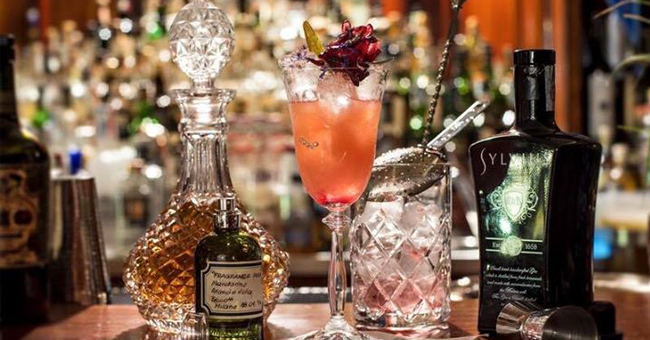 Wild Hibiscus Flower Co. got its start with preserving flowers in syrup, but the company’s offerings have since expanded to include salts, teas and extracts.
Wild Hibiscus Flower Co. got its start with preserving flowers in syrup, but the company’s offerings have since expanded to include salts, teas and extracts.


